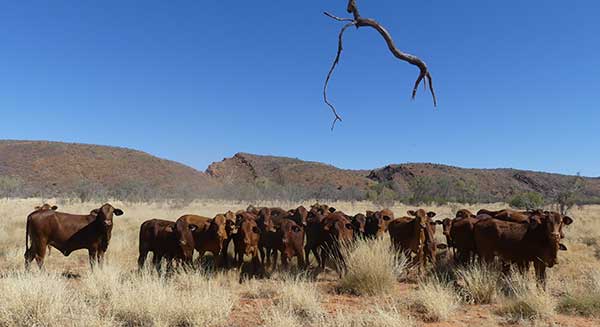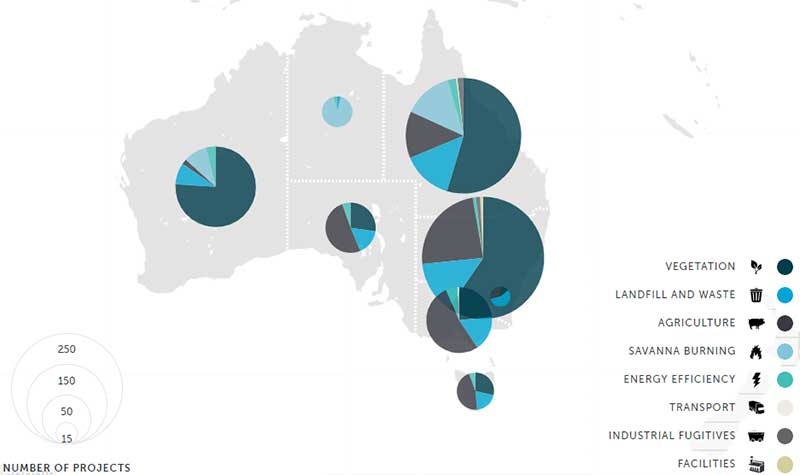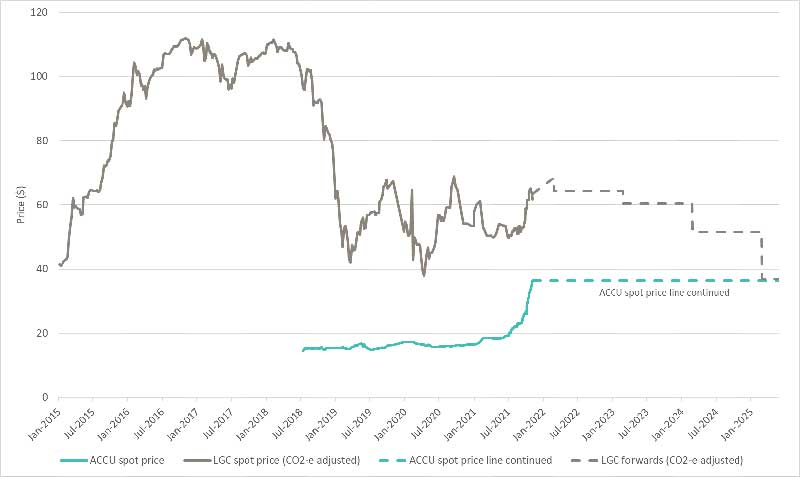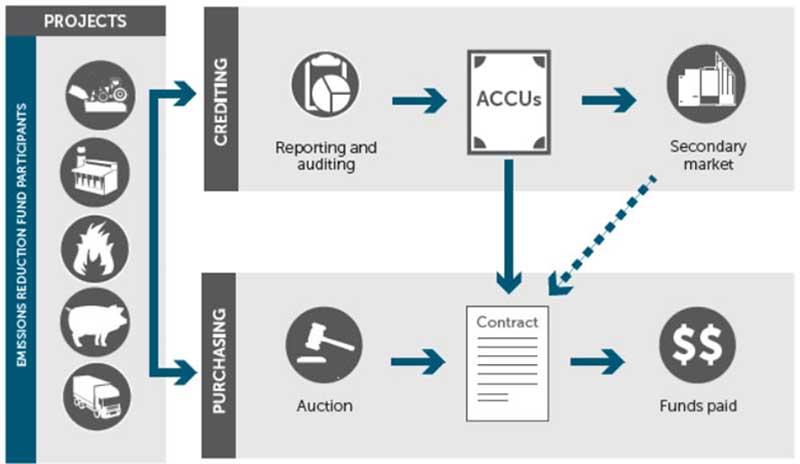Carbon credits, CA$H now?

Carbon, carbon, carbon … Everyone wants to talk about it but who understands it?
The carbon economy is growing rapidly. Australian and international rules on how it will operate are still developing but producers don’t need a crystal ball to know that it is going to affect their business in the near future. Any company, business or organisation that is producing greenhouse gasses may be interested in purchasing carbon credits. Some companies are already doing that.
There is also a growing ambition for carbon neutrality among consumers, industry sectors and state, territory and national governments. Increasingly, businesses will need to demonstrate carbon neutrality for market access and compliance with regulations. Buying and selling carbon credits is becoming a serious business.
Opportunities already exist for beef producers to obtain carbon credits. The Australian Government’s Clean Energy Regulator website provides case studies from producers across Australia who have changed their management practices and are receiving income from carbon credits under the Emissions Reduction Fund (ERF). To view a summary of the current projects, go to the Clean Energy Regulator website.

Source: Clean Energy Regulator website.
The main opportunity for Northern Territory cattle businesses is claiming credits that demonstrate reduced carbon emissions per kilogram of beef produced. This is primarily achieved by improving the productivity of the herd. It sounds like a good idea - the chance to improve production and cash in twice. However, producers may want to ask themselves - should I be claiming the credits now, hold on to them as an investment for my business’ social license, or retain them for potential future regulatory compliance?
For producers looking at getting involved in the carbon credit market place, it is worth considering the following points:
- Australian carbon credit unit (ACCU) prices could increase and potentially become much more valuable in the future
- the origin of carbon credits may increase the value of the credits in the future and therefore receive a premium (that is, not all credits are equal)
- carbon credits cannot be counted twice - once sold, you can no longer claim them, as they become the purchaser’s offset
- your business may need those credits more in the future than it does now, whether for market access, compliance, or for cash flow
- it is unclear who owns the rights to trade carbon or carbon credits generated on the Territory’s pastoral estate. We recommend that you look into the legalities around acquiring carbon credits. A good starting point is native title on the Clean Energy Regulator website.
Carbon market
The Paris agreement is the driver for the reduction in carbon emissions. The ACCU and large‑scale generation certificates (LGCs) are tools used to put a price on the increased demand for emissions reduction. The ACCU spot price has doubled in value between July 2018 and July 2021. As that price increases, the more rapidly the ACCU and LGC prices are likely to converge.

Source: Clean Energy Regulator.
Additional environmental, cultural and socio-economic benefits that can be associated with carbon projects will also have an impact on the value of a carbon credit and could result in premium prices. Bushfire recovery and keeping Aboriginal communities on country are examples of co-benefits that are now being measured.
Carbon credits in the beef industry
The Emissions Reduction Fund (ERF) is a voluntary scheme run by the Australian Government’s Clean Energy Regulator. A previous Rural Review article by Dr Robyn Cowley gives an overview of ERF opportunities for NT beef producers (see link at the end of this article).
You must be successful in your application if you want to attain ACCUs under the ERF, your project must be registered and you are expected to meet the reporting and auditing requirements.
Once you attain an ACCU, you have an option to hold onto the credit or sell it. An ACCU can either be sold to the government through an abatement contract or on the secondary market where the market is not as regulated and credits are sold through a private commercial contract arrangement (see figure 3).
For more explanation on the ERF, go to about the Emissions Reduction Fund on the Clean Energy Regulator website.

Source: Emissions Reduction Fund on the Clean Energy Regulator website.
Research and extension staff in the Department of Industry, Tourism and Trade have a long history of working with producers in researching and implementing practices that can improve productivity in the NT. Now it’s time for a closer look at the associated biological and financial carbon stories. Existing collaborative research is investigating the effects of grazing regimes and fire management on biomass carbon above ground and soil carbon at Kidman Springs Research Station in the VRD.
On the financial side, there are some NT beef cattle herd management projects that aim to reduce emissions from pasture-fed beef cattle. They are designed to earn ACCUs by demonstrating increased productivity of the herd. They include the introduction of new practices that result in one or more of the following:
- increased herd weight to age ratio (heavier, younger cattle)
- reduced average herd age
- reduced proportion of unproductive animals in the herd
- increased total annual liveweight gain of the herd through changed livestock class proportions (for example, fewer breeding cattle and more weight-gaining productive animals because of higher weaner survival rates).
To be eligible applicants must:
- identify an eligible herd - herds must be grazed, continuously managed over time, identifiable from other herds and have at least 3 years of positive liveweight gain in the past 7 years.
- use data from the past 7 years to calculate the historic liveweight gain of the herd
- establish legal right (the right to run the project and claim carbon credits) - that is, having ownership or control over cattle herds and the land on which the cattle are run
- make sure the project is new - applicants cannot start project activities before the project is registered.
Producers who need assistance with data collection should read the article on this topic published elsewhere in this edition.
Carbon neutrality
Carbon neutrality is becoming increasingly important for marketing and for social licence in the red meat industry. This is why MLA set the target for the industry to be carbon neutral by 2030.
Climate Active carbon neutral certification gives a business a creditable stamp in support of their reduced greenhouse gas emissions. Because it is nearly impossible to avoid the creation of greenhouse gasses entirely, producers will most likely need to purchase carbon offsets. Carbon neutral certification demonstrates to consumers that producers are serious about making positive changes to improve the climatic impact of their business or product.
Richard Eckard of the University of Melbourne is the Professor of Sustainable Agriculture and is the director of the Primary Industries Climate Challenges Centre. He is an expert on carbon accountability in Australian agriculture and has highlighted the following steps for NT producers to ensure they are on the right path to carbon neutrality:
- improve reproductive rates, mate cattle earlier and improve fertility through selection and diet quality
- increase legumes in pastures
- be ready to apply research on slow-release inhibitors and vaccination.
Questions to think about….
How can I be earning carbon credits? Am I collecting the right data?
How will carbon neutral beef look on the supermarket shelf?
Is it too soon to be selling my carbon credits?
Useful link
Northern Territory Pastoral Land Act 1992
Related article
You can find more information on the various options for Territory beef industries to demonstrate reduced emissions in Dr Robyn Cowley’s article published in the Rural Review August 2021 edition Current options to reduce greenhouse gas production and store more carbon on Northern Territory pastoral land.
